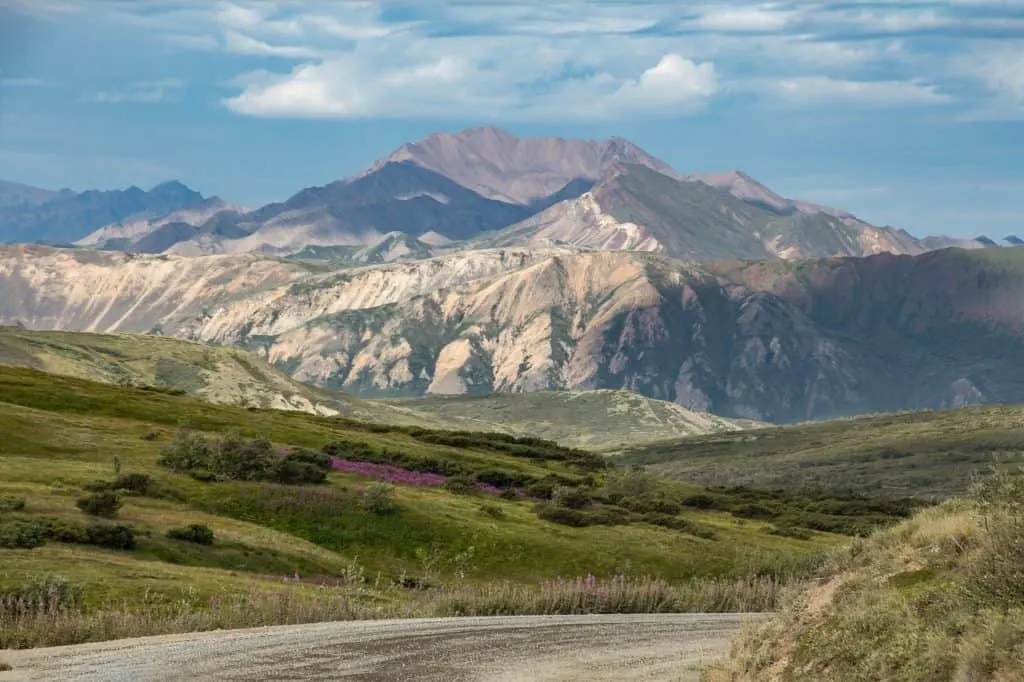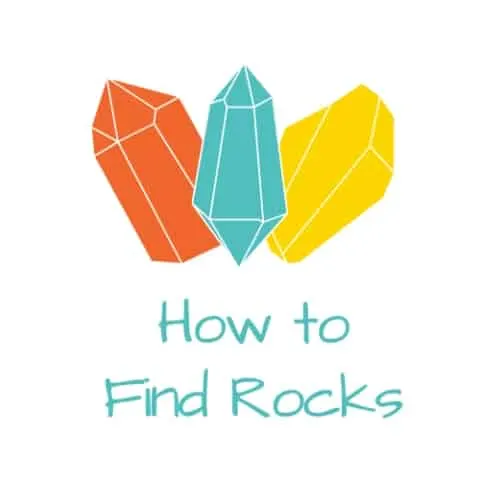As an Amazon Associate, I earn from qualifying purchases with no additional costs for you.
The Earth’s mighty plates are always on the move! They collide, grind, and shift, creating incredible stress within the rocks. This pressure eventually explodes as an earthquake. The landscape changes, leaving behind twisted rock formations and cracks called faults – some still restless, others silent reminders of the forces below
Serpentine is common in earthquake zones, along with shocked quartz, chrysoprase, garnet, ophiolite, olivine, and kyanite. Metamorphic rocks such as slate, schist, marble, limestone, and quartzite are also features of these zones, where many semi-precious gems and crystal formations can be found.
Earthquakes occur when the energy stored in rocks suddenly releases, causing them to rupture. Cataclastic metamorphism occurs when two bodies of rock slide past one another along a fault zone. In these conditions, the rocks are subjected to high temperatures and pressures. Examples of minerals that characterize high-grade metamorphic rocks are muscovite, garnet, and biotite.

If you want to check out the best rockhounding tools, you can find them here (Amazon link).
What Kind of Rocks are Found in Earthquake Zones?
Earthquake zones are suitable for various, often rare, rocks and minerals. Below are the eight most common rocks and minerals you can find in earthquake zones:
Serpentine
Serpentine is commonly found in California’s San Andreas fault zone and occurs in Oregon and North Carolina. It is a metamorphosed oceanic crustal rock that can alter chemically to a soft mineral called talc.
Serpentine is a dark green material with a slippery feel. It is sometimes mottled like snakeskin. Serpentine is the name of a group of minerals that includes chrysotile, antigorite, and lizardite.
Serpentine is found where peridotite, dunite, and other ultramafic rocks undergo hydrothermal metamorphism.
Serpentine polishes well and can easily be cut into various shapes and have a waxy luster which makes it popular as a gemstone. Rare specimens are stunning translucent clear lime green. Serpentine carvings are often mistaken for jade by inexperienced buyers.
Ophiolite
Remnants of ancient oceanic plates, known as ophiolites, were thrust up to the Earth’s surface by seismic activity along current and ancient plate boundaries. Ophiolites can contain jade, chrysoprase, and magnetite.
Interestingly, the name ophiolite comes from ophis, the Greek word for snake. Ophiolite has been found in California in the coastal ranges from Santa Barbara through San Francisco Counties.
The Josephine ophiolite occurs in the Klamath Mountains Geomorphic province of southwestern Oregon and northwestern California.
Subduction has been happening along the west coast of North America for several hundred million years. Ophiolites are chunks of seafloor that have mixed with granitic continental crust.
TIP: Some minerals and rocks have pretty unique magnetic properties. Check out the list of magnetic rocks in the article below:
List of Common Magnetic Rocks & Minerals (with Explanation)
Olivine
Olivine is usually a beautiful deep green color and is the name of a group of rock-forming minerals found in basalt, gabbro, and peridotite. In its popular gemstone form, olivine is known as peridot. It can also be yellowish-green and brown.
Olivine is found on the Earth’s surface in dark igneous rocks common at divergent tectonic plate boundaries and hotspots. Green olivine sand is found at Papakolea Beach in Hawaii. Large crystals are uncommon and highly sought after.
Shocked Quartz
Shocked quartz is the name for quartz crystals that display damage in the form of parallel lines running through the crystal.
The lines are small quantities of glassy material formed inside the rock by almost instantaneous melting and resolidification when a shockwave hits it. They have long been associated with meteorite impacts, which would undoubtedly have caused earthquakes, but they can also result from lightning strikes.
Chrysoprase
Chrysoprase is a form of translucent chalcedony that occurs in colors ranging from pale yellowish-green to a deep vivid apple-green.
It is found within ophiolite, serpentinite, peridotite, and dunite at subduction zones. It is often seen as a vein, cavity, or fracture filling in peridotite, dunite, or serpentine.
Chrysoprase is found in California, in the San Andreas fault zone and Arizona. It occurs at shallow depths in places where nickel-bearing rocks have been weathered and have a waxy luster. It can be opaque or nearly transparent.
Kyanite
Kyanite is a blue mineral found in metamorphic rocks, which are formed in high-pressure alterations of clay minerals in sedimentary rocks or pegmatites.
The rock is formed during continental collisions. It can also be white, green, pink, and light gray and is very brittle. It is usually associated with staurolite, muscovite, and serpentine or talc.
Most of the US’s kyanite comes from Virginia, where around 143 earthquakes were recorded between 1774 and 1976. Kyanite is an important indicator of pressures and temperatures in metamorphic rocks.
TIP: Luster is a physical property always determined when identifying minerals. It is as important as color, hardness, streak, and cleavage. Find out more about lister identification in the article below:
Step-by-Step Guide: Testing Mineral’s Luster Like a PRO
Staurolite
Staurolite is a mineral found in rocks altered by regional metamorphisms, such as schist and shale. It is frequently found in association with almandine garnet, muscovite, and kyanite, which formed at the same pressures and temperatures.
Staurolite is famous for its twinned cruciform crystals, known as a fairy cross or fairy stone. It is abundant in a few places in Patrick County, Virginia—notably Fairy Stone State Park. Staurolite is deep brown, reddish-brown, black, yellowish-brown, or dark gray.
Staurolite is the State of Georgia‘s official mineral and can be found in Fannin County. Staurolite crystals typically have rough and pitted surfaces due to the inclusions of garnet, mica, and other minerals, which makes them difficult to polish.
BTW: Do you want to know more about rock and mineral identification? The books listed below are the best ones you can find on the internet (Amazon links):
- Smithsonian Handbooks: Rocks & Minerals
- Gemstone & Crystal Properties (Quick Study Home)
- Ultimate Explorer Field Guide: Rocks and Minerals (National Geographic Kids)
Muscovite
Large crystals of muscovite are frequently found in veins and pegmatites. It forms crystals and plates in metamorphic rocks, particularly gneiss and schist.
It belongs to the mica family of minerals. Sheets of Muscovite have a pearly surface luster and are transparent when held up to the light.
Although mainly colorless, most sheets have brown, rose, yellow or green tints. It is an important component of metamorphic rocks. It has perfect cleavage, which can be split into thin, flexible, transparent sheets.
TIP: Marcasite is a highly valuable mineral when found in vintage jewelry. Marcasite is an iron sulfate. Find out more about the value of this beautiful mineral in the article below:
The Real Value of Marcasite (Explained by PRO Geologist)
Notable Earthquake Zones

New Madrid in southeast Missouri sits on a major fault that extends into Arkansas. This seismic zone is a geological enigma that has produced some of the largest earthquakes recorded in the United States.
The San Andreas fault in the American northwest is an example of the Pacific plate slipping past the North American plate. Scientists at the University of California are becoming convinced that mineral interactions trigger shallow earthquakes in the State.
The Wasatch Fault runs along the Rocky Mountains’ western edge and underneath Salt Lake City and Provo in Utah. It has distinct segments that act independently of each other. Utah is known to some as the rockhounding capital of the US.
The Denali Fault extends from Canada into the center of Alaska and runs beneath the Denali National Park. Denali is the native Alaskan name for Mt McKinley, the highest mountain in North America.
Denali National Park has a complex geology with rock formations that have been carried from thousands of miles away, and it has some of the oldest rocks in Alaska.
Virginia contains three earthquake zones, one of which is almost entirely located in the Piedmont province.
TIP: Alaska is full of earthquake zones, especially Denali National Park. You can find here a lot of beautiful gemstones. Check out the complete guide about rockhounding in Alaska in the article below:
Best Rockhounding Sites in Alaska & What You Can Find
Tips For Rockhounding In Earthquake Zones
You will need to do some research to identify areas in earthquake zones where rockhounding is permitted. Metamorphic rock can be found on the top of mountains, beaches, and valleys, so a sturdy pair of walking or climbing boots is essential.
Natural History Museums in your area of interest may display specimens of local rocks and minerals that can help you to identify places to look for them. The Los Angeles County Museum of Natural History is one such resource.
Keep an eye open for Gem and mineral exhibitions in the locality of interest. Much of California is private land, and many national parks do not allow rockhounding.
It is worth checking with public land information centers and ranger stations beforehand on what is allowed, and they may be able to point you to great rockhounding sites.
Stay out of old mine tunnels and shafts to be safe.
TIP: It’s rockhounding time now! But do you know what tools you need for rockhounding? Check out the list of all needed tools and equipment for rockhounding in the article below:
The Complete Guide: All Tools You Need for Rockhounding
